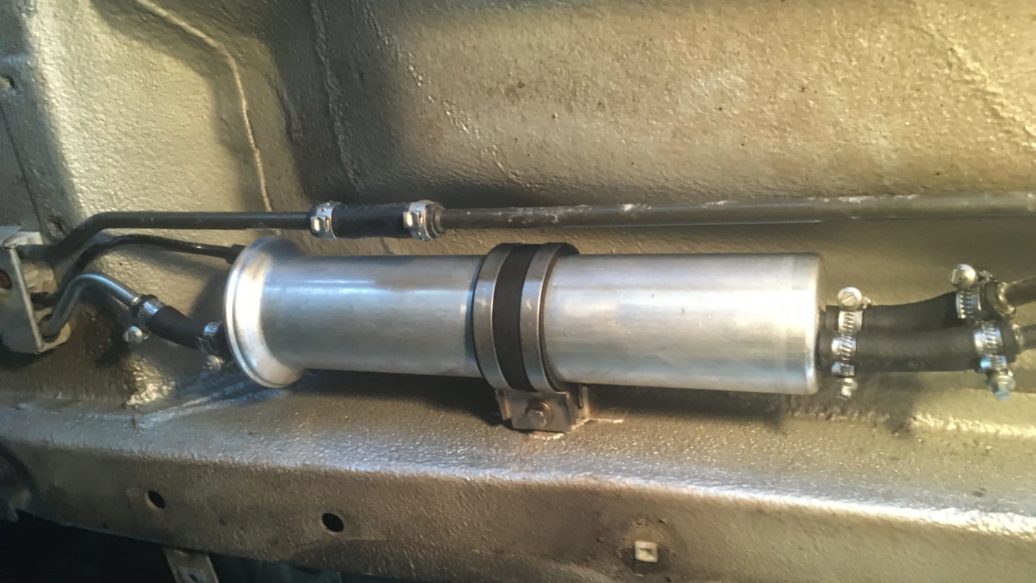Last month I wrote about my 2003 E39 530i stick sport having a mysterious death-and-resurrection experience while low on fuel in hot weather, losing power multiple times but recovering when I let it sit for a few minutes, only to repeat the cycle. Folks chimed in here and on Facebook with a number of theories, including clogged catalytic converters—but to me, it clearly felt like a fuel delivery problem, so I began by ordering a fuel-pressure gauge that screws into the Schrader valve on the fuel rail. The gauge read about the correct pressure, but also vibrated mysteriously. On this car, the fuel pressure regulator is integrated with the fuel filter, so I ordered a $50 Hengst replacement.
Meanwhile, more comments came in, generally coalescing around the theory that the root cause of the car’s cyclically dying and being reborn was more likely a combination of high temperature and low fuel level causing the power loss, either through vapor lock causing cavitation of fuel at the fuel pump, incorrect transfer of fuel from the left side of the tank to the right, overheating of the pump due to lack of immersion, or a combination of all three.
I was hesitant to try intentionally re-creating the problem by running the system nearly empty again in hot weather, but I did drive the car quite a bit with between five gallons and a full tank, and it never so much as hiccupped.
Since I work from home, and since my wife and I are in the habit of taking her much-lower-mileage 2014 Honda Fit if we need to go out of town (go ahead, shame me, I don’t care), I just kind of let the problem ride, cognizant of the fact that if (when!) the car died again, I’d feel like a big doofus.
Spoiler alert: That hasn’t happened (yet), but having already bought the fuel filter, I did swap it in.
First I re-checked the fuel pressure. It held dead-nuts steady at idle at 5o psi, just one psi lower than spec, without the rapid oscillation I saw when I first checked it: So much for catching it in the act. Still, on a car with nearly 200,000 miles and plainly apparent deferred maintenance issues, what was I going to do, return the fuel filter? So in it went.
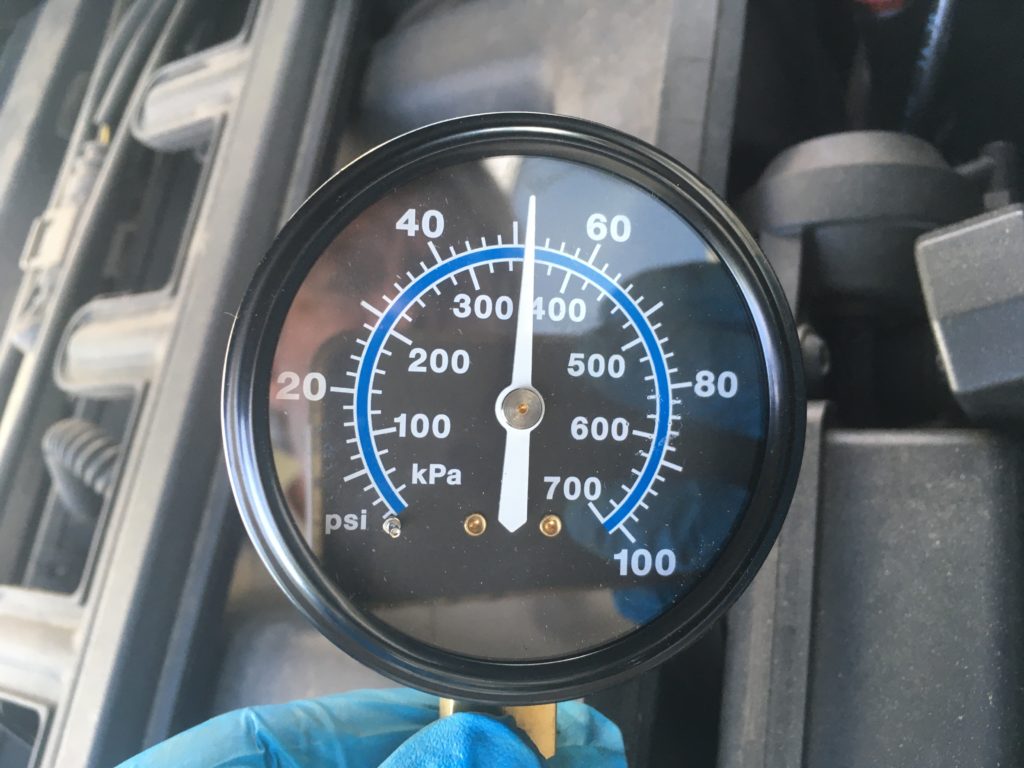
This time, solid as a rock.
Next, I did a quick video check. As is the case with nearly everything these days, there are a number of good videos on the fuel-filter replacement. I used this one just to reassure myself that there wasn’t anything weird or “You’re an idiot if you don’t also buy this part,” and there wasn’t.
I remembered from the last time I replaced one of these that it’s one of the rare instances when my mid-rise lift is actually a hindrance. The fuel filter is found under plastic body cladding on the left side of the car, near the jack pad; not only is this where I need to lift the car on the mid-rise, but it places the solid structure of the lift itself directly in the way (unlike, say, the transmission and exhaust, which are in the middle where the lift has cut-uts). So instead of being able to sit up comfortably beneath the car, this was old-school work, lying on the garage floor with the car supported by jack stands and the floor jack (always “double-jack” a car by leaving the floor jack in place after setting the car on the stands). You can still place the stands under the jack pads as long as they’re not trapping or pinching the under-cover.
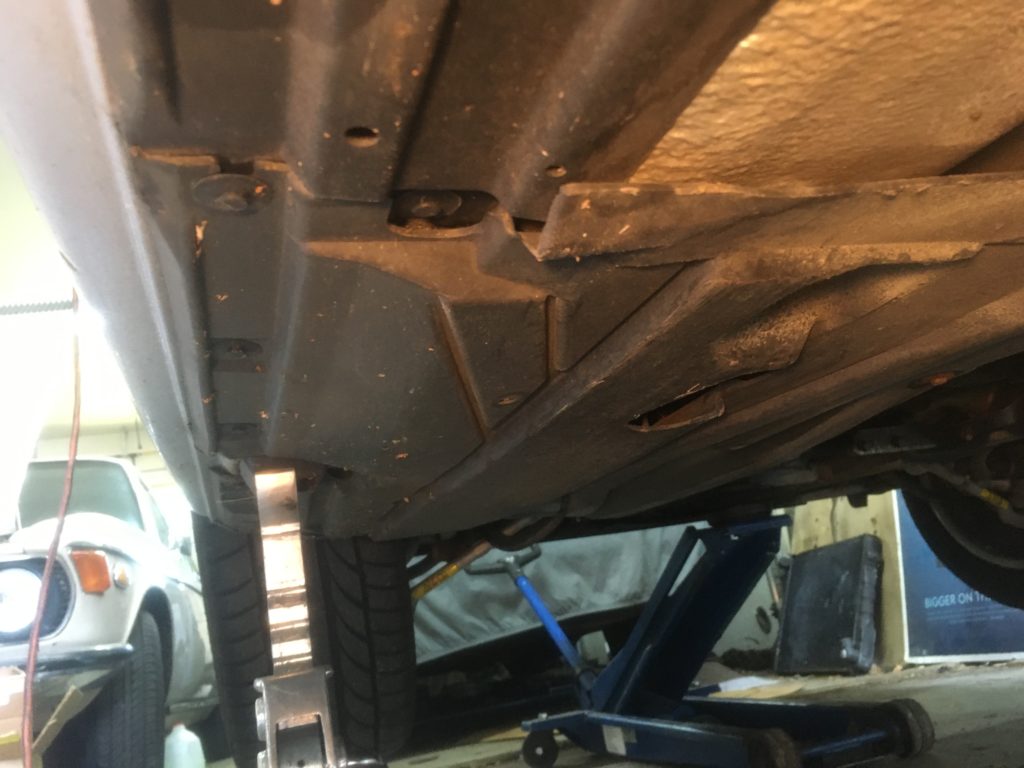
Up it went. Under I went. The Bavaria looked on with interest, thinking, “I thought you were going to work on me!”
Along the edge, there is a row of plastic push-in clips whose center plastic pins you need to pull out. Mercifully, they all came out without being destroyed. Undo a bunch of 8-mm screws (two of them inside the bottom edge of the fender well) and two 10-mm nuts, and off comes the cover.
But when I pulled it away from the jack pad, it revealed a rather alarming spot of corrosion forming under the rubbery coating on the E39’s otherwise rust-free body.
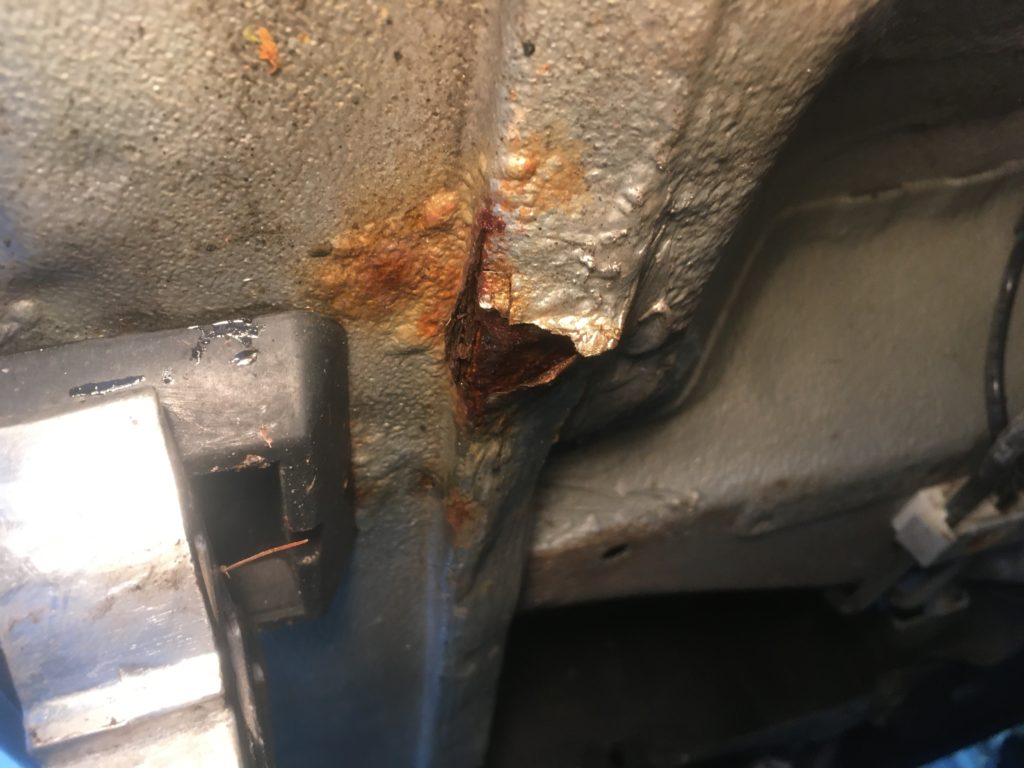
Surprise!
From the presence of the original crimped hose clamps, it was highly likely that the fuel filter had never been changed. Considering the car’s mileage, replacing the filter/regulator was a good thing, regardless of whether or not it had anything to do with the car’s loss-of-power problem.

Probably original, right?
To get the crimped clamps off, I used a set of top-facing cutters I have for just this purpose: A little cutting, a little twisting, and they surrendered.
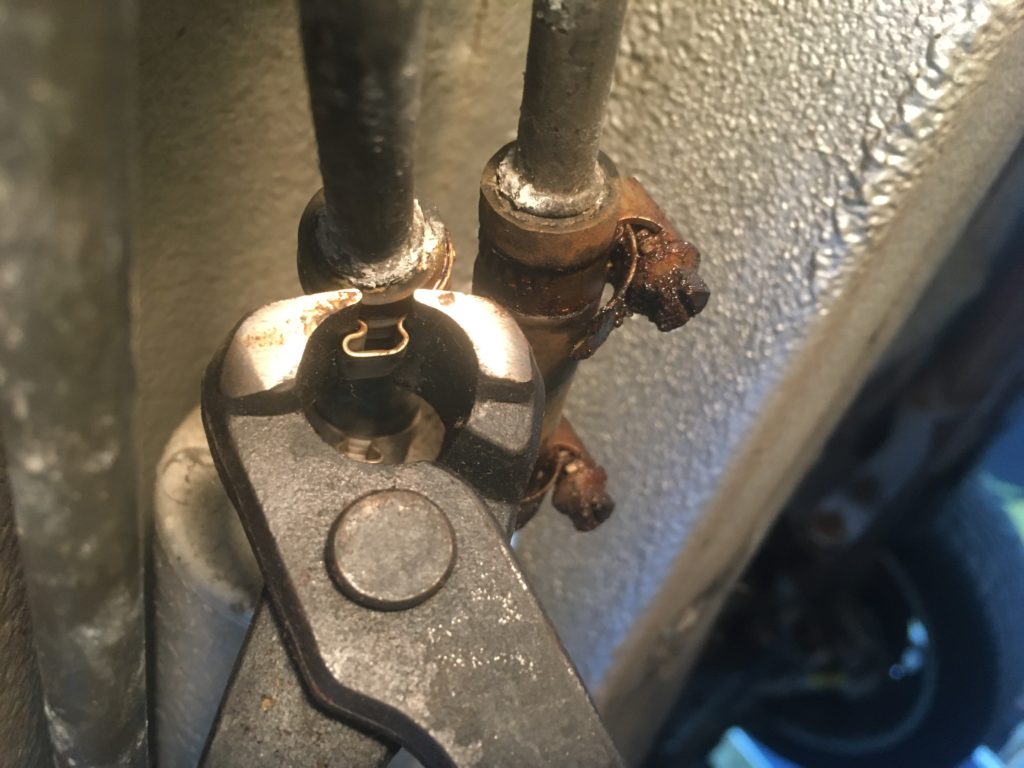
The right tool and all that.
I had some correct BMW hose clamps with 5-mm nuts left over from The Tyranny Of The Hose Clamp Police episode with my 2002 “Hampton” a few months back, and even had the 5-mm flex nut driver that someone was kind enough to send me when I complained that I didn’t own one.
Out came the old filter. With it on the ground, I could read the date code: February 13, 2003. Yep, original to the car.
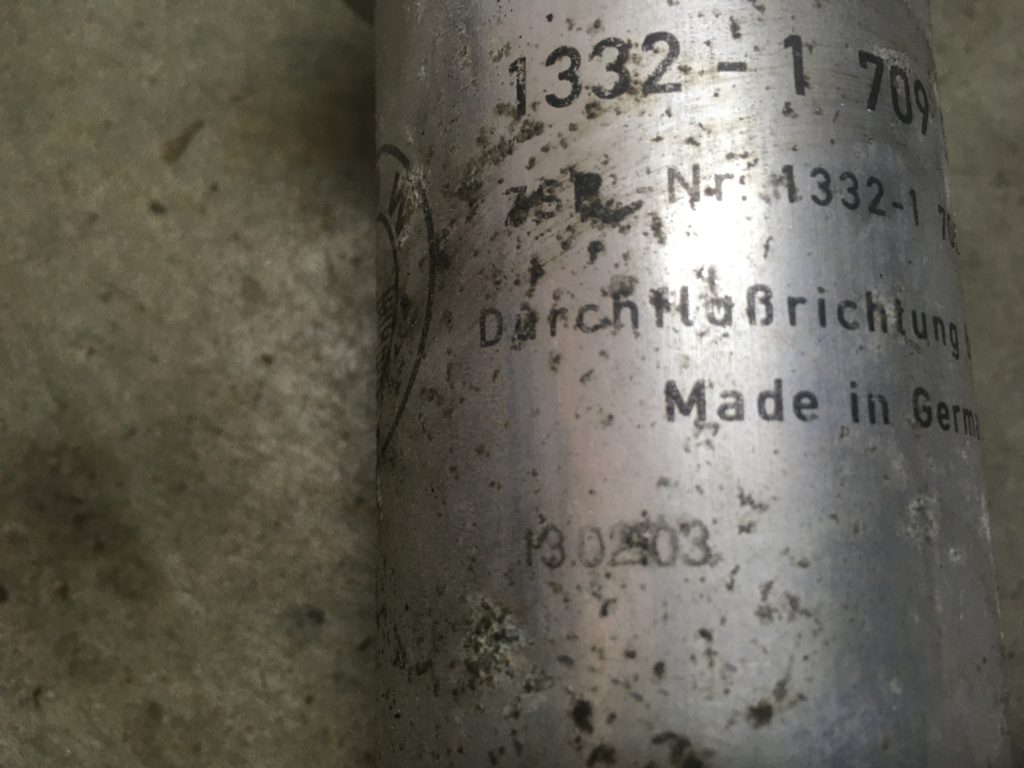
Yeesh! The fuel filter was old enough to vote!
I drained the old filter, first tipping the outlet side into a container. The gas ran clear. But when I tipped it the other way, with gas running out the inlet (pre-filter) side, what came out was black. Nice to know that it was trapping something! I didn’t quite have the stomach to slice it open and do a full post-mortem on it.
After transferring the clamp and rubber sleeve over to the new filter/regulator, in it went, complete with new rubber fuel lines and new hose clamps. I ran the engine for 30 seconds to ensure that the new connections were leak-free.
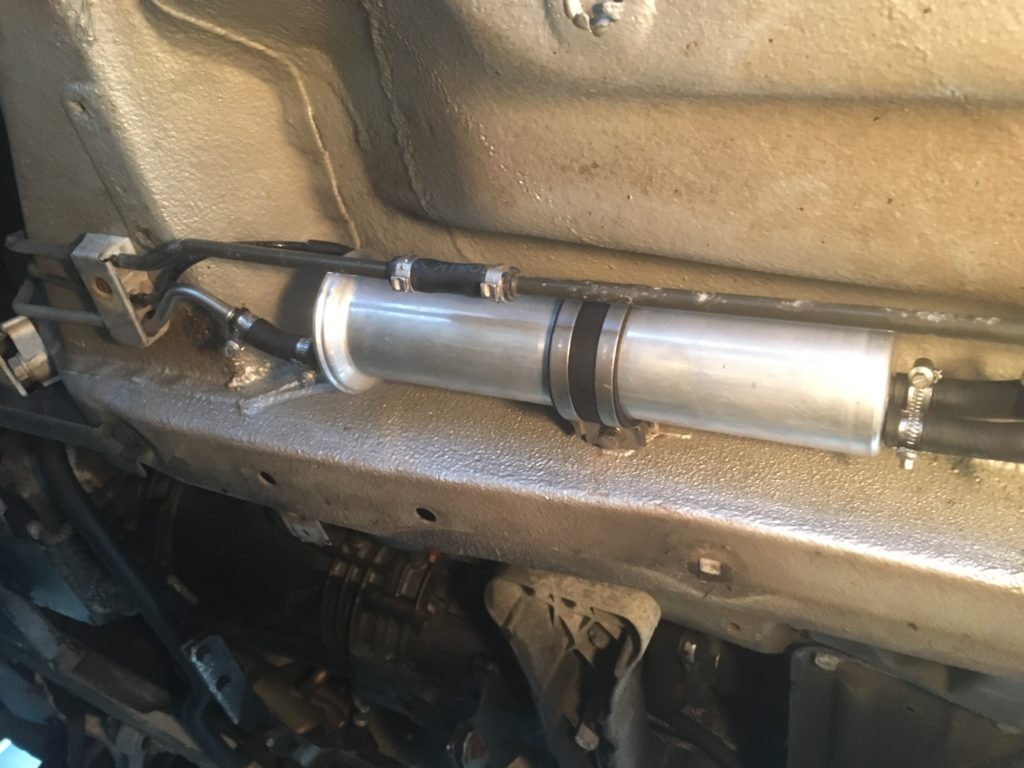
You can almost feel waves of reliability emanating from it, can’t you?
With the filter done, I turned back to the little rust surprise. I attacked it with a drill and a wire wheel, then coated it with a Loctite Extend rust neutralizer. I noted that there was a bit of bubbling extending beneath the plastic jack pad, so I reattached the under-cover, and once the car was down off the stands, I tried to pop off the pad and sand beneath it. Unfortunately, I couldn’t get the pad off. I left this one for another day.
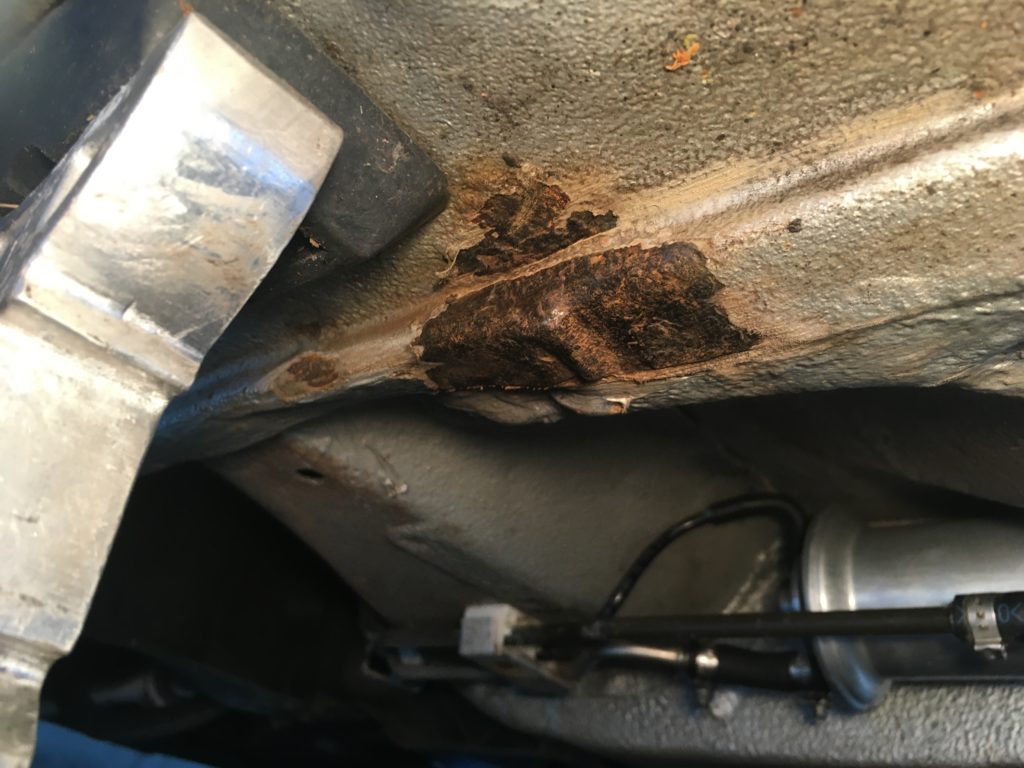
Not done, but better. For now, I’ll watch it.
Of course, there’s still the underlying death-and-resurrection fuel-delivery issue to deal with or ignore at my peril. I said last month that rather than simply ordering a fuel pump, I want to open the tank up first and step through the process that Stéphane Grabina recommended, examining not only the fuel pump, but the level sensors and the “sucking jet” transfer pump, and I haven’t yet done that.
Further, the car’s cooling system has all the same deferred-maintenance issues as the fuel system. The lower radiator hose is soft, and I was about to stick a thumb in the slippery slope’s eye and replace it—and only it—but when I checked the coolant level, I found the expansion tank surprisingly low, so I’m deciding how deeply I want to wade into that pond. With the car having no service records, I should probably approach both of these repairs by taking things apart and replacing failure-prone items if I find that they’re original.
Maybe I should just start daily-driving my ’72 2002tii instead. I mean, it now has working air conditioning!—Rob Siegel
Rob’s new book, The Best of The Hack Mechanic, is available here on Amazon, as are his seven other books. Signed copies can be ordered directly from Rob here.

